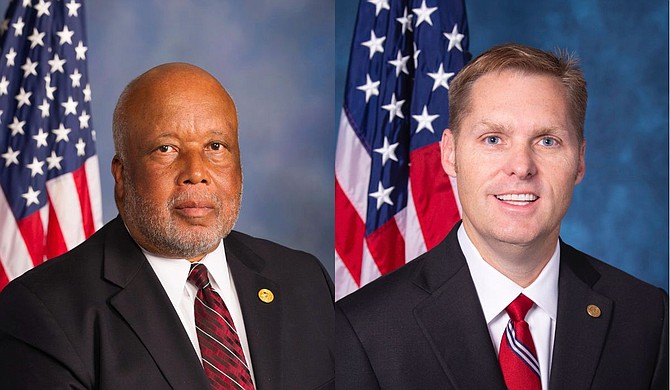A group of Mississippi lawmakers finalized a proposal on Wednesday for how the state’s four congressional districts could look in the next decade, one that will largely preserve Republicans' 3-to-1 advantage. Photo courtesy U.S. House of Representatives
JACKSON, Miss. (AP) — A group of Mississippi lawmakers finalized a proposal on Wednesday for how the state’s four congressional districts could look in the next decade, one that will largely preserve Republicans' 3-to-1 advantage.
The proposed “Magnolia 1” map, presented by Republican Rep. Jason White, received GOP support and was greenlit by the legislature’s joint congressional redistricting committee. It will be put to the full legislature for a final vote when the session starts in January.
However, several Democratic lawmakers disagreed over how the map was reconfigured in Democratic U.S. Rep. Bennie Thompson’s district, mainly the splitting of the capital of Jackson between Thompson and Republican U.S. Rep. Michael Guest.
The state of Mississippi’s population increased slightly during the 2020 census in its three majority-white Republican-controlled districts, but it decreased by around 9% in Thompson’s district, which encompasses the Delta and most of the city of Jackson.
To have roughly equal populations among the four districts, the boundaries must be adjusted. The “Magnolia 1” proposal moves four southwestern counties — Franklin, Adams, Wilkinson and Amite — currently in Guest's district to Thompson's district to increase its population. White said the goal is to keep each district's population at around 740,020.
Moving the four counties maintains the percentage of Black voters in Thompson's district at more than 60%, White said.
However, three Black Democratic state lawmakers — Rep. Bo Brown, Sen. Derrick Simmons and Sen. Angela Turner-Ford — said they would rather see the majority-Black city of Jackson fall entirely in Thompson's district. They say they support a proposal from the NAACP that would have kept the four southwestern counties in Guest's district and made all of Jackson Thompson's. The NAACP map also would have moved more Madison County voters into Thompson's district.
White told reporters that southern Madison County and northeast Jackson are typically majority-Republican areas, and Guest wanted to keep them in his district. White said they chose to add the four southwestern counties to Thompson's district because they are river communities similar to others in his district.
He said Guest's role on the U.S. House Committee on Transportation and Infrastructure could be a boon for Jackson, which has a long history of problems with its outdated water system.
However, Simmons said by increasing the geography of Thompson's district, the Magnolia 1 plan also increases the distance he has to travel to campaign.
“If you look at the map, Congressional District Two now it spans the length of the state of Mississippi," Simmons said. “The question is, did he have to actually go all the way down to those four southern counties to pick up their population?”
Redistricting happens every decade after census numbers show how the population has increased or decreased in different parts of the state.
Mississippi will keep four seats in the U.S. House, despite the Census Bureau finding that it was one of three states to lose population between 2010 and 2020.
Mississippi dropped from five U.S. House seats to four after the 2000 Census because the state was growing more slowly than many others. Legislators then deadlocked on how to go from five districts to four, and the districts were drawn by federal judges. The federal court again handled Mississippi’s congressional districts after the 2010 census.


